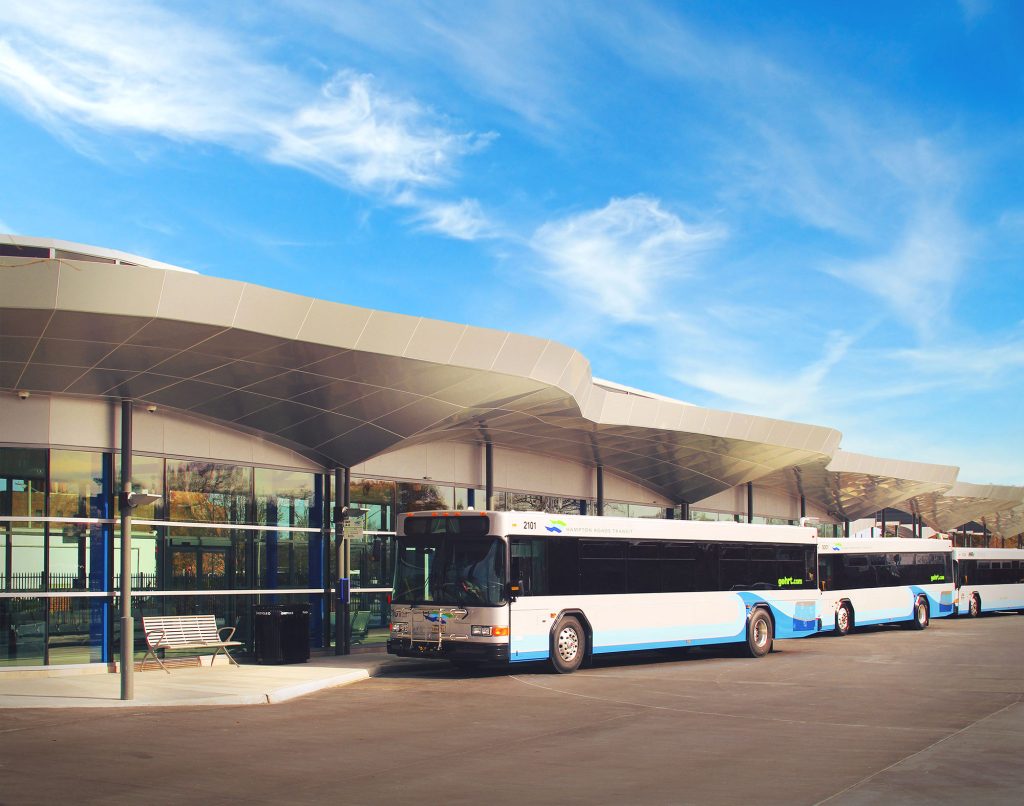Public Transportation Ridership Trends: Here’s What We’ve Learned
Sixty-four percent of Hampton Roads Transit customers ride HRT four to seven times a week.
During a typical week, 54 percent of our customers commute between home and work and 46 percent use transit for other activities such as school, medical appointments, shopping, appointments, entertainment and even local sporting events.
On weekdays, 62 percent of customers use transit to commute to work and home while 37 percent use transit for other purposes.
And they overwhelmingly find transit stops to be clean and safe while reporting positive interactions with operators.
Those are just a few of the findings of HRT’s latest origin-and-destination (O&D) study – a deep dive into who our customers are, where they’re going, and why they’re riding.
It’s the first survey conducted since the Covid-19 pandemic, and results reflect the realities of post-pandemic travel, including people working from home at least one day a week. The survey responses, in some ways, show how people use transit has changed.
About the study
Every three to four years the Federal Transit Administration (FTA) requires transit agencies that receive federal funding to conduct an O&D study. It was conducted in partnership with ETC Institute, a market research and survey company, between August and November 2023. Researchers interviewed nearly 5,000 riders. The previous survey was done in 2016.
The number of respondents represented nearly 20 percent of average weekday ridership touching every route and mode in the system (bus, light rail and ferry). Data was then expanded and weighted to ensure the sample collection was statistically representative of all ridership.
“Every day, our staff, leadership and members of the Transportation District Commission of Hampton Roads make critical decisions that impact the lives of our riders,” says Ray Amoruso, Chief Planning and Development Officer. “Knowing who are riders are, where they are going, and how they get there, is critical for all of us making those decisions. The results of this survey will hopefully help guide the agency and improve services for our riders.”
The results are in
Let’s delve into some of the results.
Of all modes, 75 percent of transit riders used a bus in 2023. That is down from 82 percent in the previous study. During the week, the most common destination for riders is work and/or home, accounting for 62 percent of all trips.
However, while more riders are using public transit to commute home (41 percent), fewer are using it to travel to work (21 percent), down 9 percentage points from the previous study. The drop in ridership reflects the continued trend in working from home and a workforce reluctant to return to an office environment five days per week.
The survey also shows a decrease in young riders, with an increase in ridership among the older population. It appears that employees 18-34 years old are more likely to work remotely at least a few days per week.
Collectively, Gen Z and Millennials make up about 44 percent of all transit riders, while Gen X and Boomers about 54 percent. In 2016, 56 percent of riders were between ages 18 and 34. That number has dropped significantly in 2023 to 27 percent.
“We are taking steps to understand this shift and recapture younger workers on transit,” Amoruso explains. “Ridership in ages 45 and older have increased significantly and now represent the larger ridership groups.”
While the survey shows most riders have a household income below $25,000, there is one positive trend regarding finances. It appears that more customers are “banked” than in the previous O & D study. In 2016, 91 percent of riders utilized cash to pay their fare. That number is down to 53 percent in 2023.
Another major takeaway is the importance of implementing 15-minute service frequencies on three routes of the 757 Express bus system. The data reveals these regional backbone routes, with higher service frequencies, are utilized by large swaths of Hampton Roads residents. “This shows that providing reliable, more frequent service along those routes is key to keeping current riders and bringing new riders into the system,” Amoruso says.
Getting to a transit stop
The most common access mode to a transit stop by our customers is walking, at 88 percent. HRT has 2,682 bus stops, of which nearly 520 have some type of passenger amenity such as shelter or bench. This data highlights the need for continued investments in our bus stops that include sheltered waiting areas, with a focus accessible pedestrian infrastructure.
“Addressing areas where we have less-than-desirable pedestrian access to a bus stop, poor waiting areas, and incomplete sidewalks is essential,” Amoruso says. “Since HRT does not typically include the construction of sidewalks, our partnerships with the cities are critical.”
The study also surveyed smartphone ownership, an important factor when deciding to roll out technology enhancements, including planned mobile ticketing for all modes. The survey found that 95 percent of HRT customers identified that they own smartphones. However, smartphone ownership does not indicate that the owner has a data plan available or may have limited-data plans. Still, features such as real-time bus information is an asset to customers.
More about our riders
The survey also uncovered the following statistics:
- Riders are 58 percent male, 42 percent female. When compared to the 2016 gender breakdown, the 2023 female ridership has decreased system wide by 13 percent.
- 79 percent of riders identify as minority persons.
- 64 percent of riders are employed full-time or part-time, which is down 12 percent from the 2016 survey.
- 8 percent of riders are full- and part-time students while 1 percent are in grades K-12.
- Half of respondents possess a driver’s license. When asked if they could have used a car for their trip, close to 60 percent said they could not have used a car, down from 90 percent in 2016.






